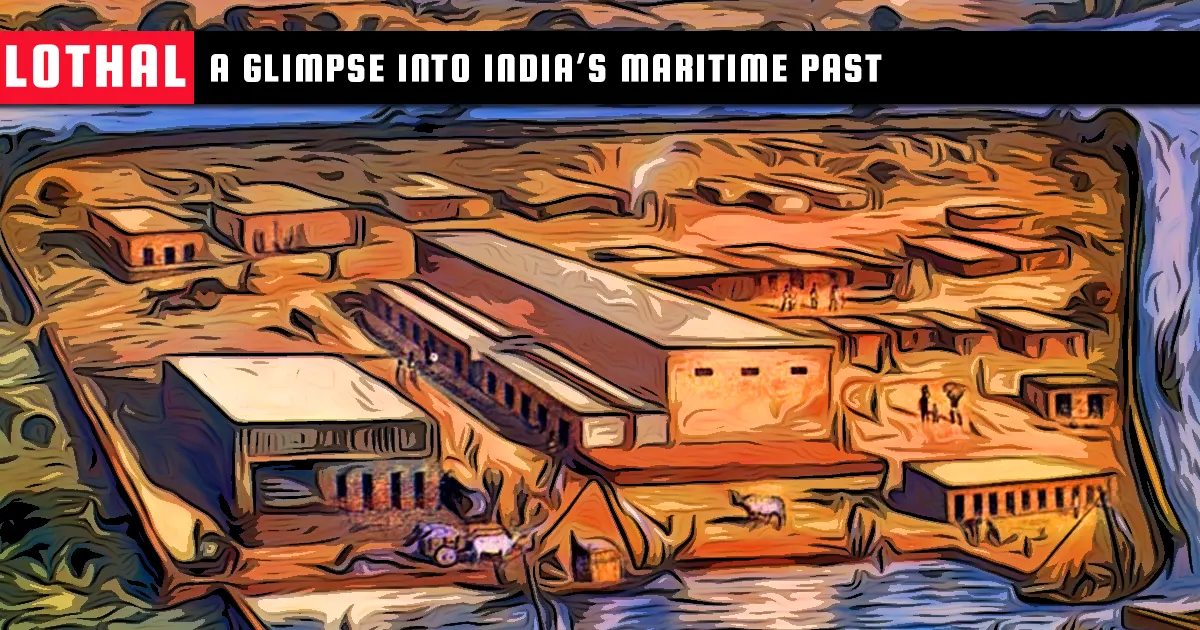
Context (IE):
The tragic death of a 23-year-old IIT Delhi researcher at Lothal, while conducting research on climate change’s impact on the Indus Valley Civilisation, has brought renewed attention to this significant Harappan site.

- Location and Historical Context:
- Lothal is located in Gujarat’s Saurashtra region, between the Sabarmati and Bhogavo rivers.
- Established around 2200 BCE, it served as a vital urban center of the Indus Valley Civilization (IVC).
- Discovery and Significance:
- Discovered in 1954 by archaeologist S.R. Rao.
- Lothal’s strategic location and thriving trade made it a prominent hub, exporting beads, gems, and ornaments to regions like West Asia and Africa.
- Engineering Marvel:
- Houses the world’s oldest known dockyard with an advanced water-locking system, reflecting the technological sophistication of the Harappans.
- The dockyard was crucial for maritime trade and navigation.
- Artefacts and Trade Links:
- Excavations have unearthed bead necklaces (amethyst), axes, fish hooks, and seals resembling those from Mesopotamia.
- These discoveries confirm Lothal’s trade connections with Mesopotamia, Egypt, and Persia.
- Decline of Lothal:
- Frequent flooding and shifts in the Sabarmati River’s course likely disrupted maritime trade.
- By around 2000 BCE, Lothal transformed into a less planned settlement, marking its decline.
- National Maritime Heritage Complex (NMHC):
- A significant project under construction in Lothal, in collaboration with Vietnam.
- Aims to showcase India’s 4,500-year-old maritime heritage, featuring attractions like a Lighthouse Museum and a 5D theatre.




